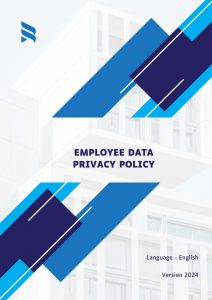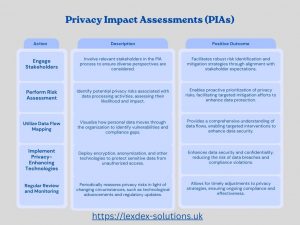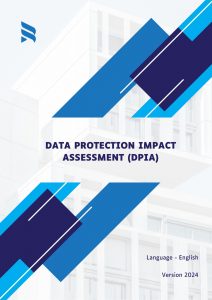For small businesses and start-ups, a Key Legal Document Checklist for legal documentation plays a crucial role in ensuring compliance, managing risks, and fostering smooth operations. Navigating through various legal requirements can be daunting, but having a comprehensive checklist of key legal documents can provide powerful solutions and peace of mind. This post outlines the essential legal documents every small business and start-up should prioritize, incorporating critical legal concepts and terms to facilitate an intuitive understanding.
Contracts and Agreements
1. Operating Agreement
An Operating Agreement is a vital document for businesses structured as Limited Liability companies (LTDs). This document outlines the ownership, governance, and operational procedures of the company, which is essential for maintaining clarity among members. It serves as an internal manual for managing the business and resolving disputes among members, thus avoiding potential conflicts. By defining roles, responsibilities, and decision-making processes, it ensures smooth day-to-day operations. Additionally, having a well-drafted Operating Agreement can provide legal protection and help in securing funding from investors who seek transparent business practices.
2. Non-Disclosure Agreement (NDA)
NDAs, or Non-Disclosure Agreements, are contracts designed to protect sensitive information from being disclosed to unauthorized parties. Understanding the NDA meaning is crucial as it helps maintain confidentiality and safeguard proprietary information, which is often a competitive edge for businesses. This agreement is essential when sharing confidential data with employees, contractors, or potential investors, ensuring that your business secrets remain protected. NDAs also establish trust among business partners by formalizing the commitment to confidentiality. Without an NDA, businesses risk losing valuable intellectual property and sensitive information to competitors or the public.
3. Master Service Agreement (MSA)
An MSA outlines the terms and conditions governing the relationship between a service provider and a client. It standardizes the process for delivering services, thereby reducing the risk of disputes and ensuring that both parties are clear about their responsibilities and expectations. This agreement covers aspects such as payment terms, performance metrics, and termination clauses, making it comprehensive and beneficial for long-term business relationships. MSAs help in streamlining operations by providing a clear framework for all service-related transactions. Furthermore, they can be customized to suit specific needs, offering flexibility while maintaining a strong legal foundation.
4. Contracts Between Two Parties
Every business must engage in contracts with vendors, clients, and other stakeholders, making it imperative to have well-drafted agreements. These contracts should clearly define the scope of work, payment terms, and deliverables to avoid misunderstandings and potential disputes. Properly drafted contracts help in enforcing agreements and protecting the interests of both parties involved, ensuring legal recourse in case of breaches. They serve as a reference point for resolving conflicts and clarifying responsibilities, thus fostering trust and reliability. Additionally, these contracts can include indemnification clauses to protect against unforeseen liabilities, further securing the business’s interests.
5. Executory Contracts
Executory contracts are agreements where both parties have yet to fulfill their obligations, commonly seen in ongoing business relationships. These contracts require careful management to ensure that all parties adhere to their commitments over time. Monitoring the performance of executory contracts is essential to prevent breaches and maintain good business relationships. They often involve complex terms and conditions, necessitating meticulous documentation and regular updates. Properly managing executory contracts helps businesses avoid legal complications and ensures smooth continuation of services or deliveries as agreed.
Risk Management and Compliance
6. Indemnification Clauses
Indemnification clauses are provisions in contracts that require one party to compensate the other for certain losses or damages. Understanding what is indemnification is critical, as these clauses can significantly impact financial liabilities and risk management strategies. They transfer the risk from one party to another, providing a safety net against potential losses arising from specific events or actions. Including indemnification clauses in contracts can protect businesses from financial harm due to negligence, fraud, or third-party claims. These clauses are particularly important in industries with high-risk exposure, ensuring that businesses are not unduly burdened by unforeseen liabilities.
7. Confidentiality Agreements
Confidentiality agreements are essential for protecting sensitive business information, ensuring that proprietary data remains secure. These agreements bind parties to non-disclosure, preventing the leakage of critical information to competitors or the public. They are crucial in maintaining competitive advantage and safeguarding intellectual property, trade secrets, and other confidential data. By enforcing strict confidentiality, businesses can foster trust and secure partnerships with employees, contractors, and other stakeholders. Confidentiality agreements also provide legal recourse in case of breaches, offering a robust mechanism for protecting business interests.
8. Compliance with CCPA and GDPR
Adhering to data protection regulations such as the California Consumer Privacy Act (CCPA) and the General Data Protection Regulation (GDPR) is paramount for businesses handling personal data. These regulations govern how businesses collect, store, and process personal information, imposing stringent requirements to ensure privacy and security. Non-compliance can result in hefty fines, legal action, and significant reputational damage, making it essential to stay updated with these laws. Implementing robust data protection policies and practices is necessary to meet regulatory standards and protect customer data. Regular audits and employee training can further enhance compliance, reducing the risk of breaches and penalties.
Dispute Resolution
9. Arbitration Agreements
Arbitration agreements provide a private and often more efficient way to resolve disputes compared to traditional litigation. Including arbitration clauses in contracts can help businesses avoid costly and time-consuming court trials, offering a streamlined alternative. Arbitration typically involves a neutral third party who facilitates the resolution process, ensuring fair outcomes for all parties involved. This method is beneficial for maintaining confidentiality and preserving business relationships that might be strained by public legal battles. Moreover, arbitration can be tailored to the specific needs of the parties, providing flexible and equitable solutions to disputes.
10. Equitable Remedies
Equitable remedies are non-monetary solutions granted by courts to resolve disputes, often used when monetary compensation is insufficient. These remedies, such as injunctions or specific performance orders, can compel parties to act or refrain from certain actions. Understanding common law principles and the availability of equitable remedies can guide businesses in seeking appropriate legal recourse. Equitable remedies provide a means to achieve justice when traditional legal remedies fall short, ensuring fair outcomes. Businesses should consider these options when negotiating contracts to ensure comprehensive protection of their rights and interests.
Practical Law and Legal Research
11. Legal Research and Due Diligence
Conducting thorough legal research and due diligence is crucial for informed decision-making in business operations. This involves examining relevant laws, regulations, and previous case rulings (later cases) to anticipate potential legal issues and ensure compliance. Due diligence helps identify risks and liabilities, providing a basis for strategic planning and risk management. Regular legal research keeps businesses updated on changes in legislation and industry standards, ensuring ongoing compliance. Leveraging expert legal advice and resources can enhance the accuracy and effectiveness of due diligence efforts, safeguarding the business’s interests.
12. Legal Briefs
Legal briefs are documents submitted to courts outlining the arguments and legal basis for a case, serving as a crucial tool in litigation. They provide a structured presentation of facts, evidence, and legal precedents, helping judges understand the case’s merits. Preparing effective legal briefs requires meticulous research and clear, concise writing to persuasively convey the client’s position. Well-crafted briefs can significantly influence the outcome of legal proceedings, making them an essential component of legal strategy. Businesses should ensure that their legal representatives are skilled in brief writing to maximize their chances of success in court.
13. Paralegal Expertise
Leveraging paralegal expertise can enhance the efficiency of legal document preparation and management. Paralegals assist with research, drafting, and organizing legal documents, ensuring accuracy and compliance with legal standards. Their support enables lawyers to focus on more complex legal matters, improving overall productivity and effectiveness. Employing skilled paralegals can reduce legal costs and streamline operations, providing valuable support to small businesses and start-ups. Investing in paralegal services can also improve the quality of legal documentation, ensuring that all necessary legal requirements are met.
Financial and Fraud Prevention
14. Financial Management and Risk Mitigation
Effective financial management involves maintaining accurate records, preparing financial statements, and implementing internal controls to prevent fraud. Legal documentation, such as financial contracts and agreements, plays a crucial role in safeguarding a business’s financial health. Establishing clear financial policies and procedures helps in mitigating risks and ensuring compliance with regulatory requirements. Regular financial audits and reviews can identify potential issues early, allowing for timely corrective actions. By integrating robust financial management practices, businesses can enhance their stability and long-term success.
15. Fraud Prevention Strategies
Implementing fraud prevention strategies, including regular audits and fraud risk assessments, helps protect businesses from financial losses. Legal documents outlining these strategies should be integrated into the company’s risk management framework to provide clear guidelines. Training employees on fraud detection and prevention techniques is essential for creating a vigilant organizational culture. Leveraging technology, such as automated monitoring systems, can further enhance fraud prevention efforts. By adopting comprehensive fraud prevention measures, businesses can safeguard their assets and maintain trust with stakeholders.
Practical Solutions for Your Organisation
LexDex Solutions
LexDex Solutions offers practical law services, providing expert guidance on legal documentation and compliance tailored to small businesses and start-ups. Their solutions are designed to help businesses navigate complex legal landscapes, ensuring that all necessary documents are in place and up-to-date. By offering personalized legal advice and support, LexDex Solutions helps businesses mitigate risks and maintain compliance with regulatory requirements. Their services include drafting and reviewing contracts, managing legal risks, and ensuring data protection compliance. Partnering with LexDex Solutions can provide businesses with the legal expertise needed to thrive in a competitive environment.
In conclusion, having a comprehensive checklist of key legal documents is essential for small businesses and start-ups. From operating agreements and NDAs to indemnification clauses and compliance with data protection laws, each document plays a pivotal role in ensuring smooth and lawful operations. By prioritizing these documents and seeking expert legal advice, businesses can mitigate risks, maintain compliance, and foster sustainable growth. Investing in proper legal documentation is not just a regulatory necessity but a strategic move to secure the future of the business.










